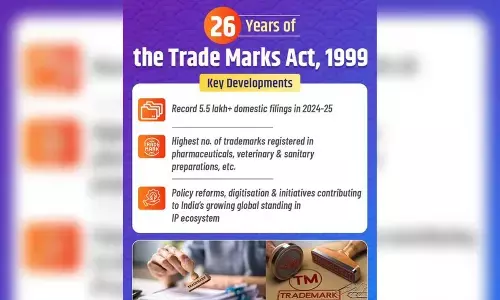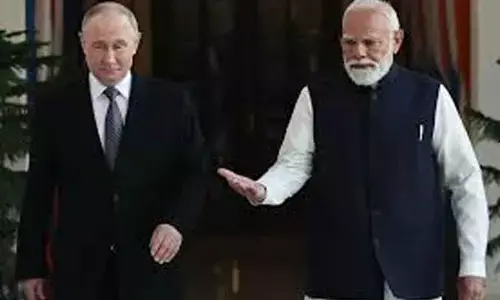Review GST for preserving national unity

The government of Punjab has complained that the State is unable to pay salaries to its employees because of the delay in transfer of its share of GST from the Centre.
The government of Punjab has complained that the State is unable to pay salaries to its employees because of the delay in transfer of its share of GST from the Centre.
It is having to borrow monies from its Public Sector Undertakings to pay the salaries. This is merely the trailer. The real drama will start three years from now.
The Centre had promised to pay to the States any shortfall in GST receipts for the first five years of the implementation of GST.
The GST receipts were expected to increase by 14 percent per year. The Centre would pay to the States any shortfall in these expected receipts.
If, for example, the GST receipts in December 2019 after 14 percent increase for Punjab were expected to be Rs 100 crore, but the actual receipts were only Rs 90 crore, then the Centre would pay to Punjab the shortfall of Rs 10 crore.
In this way, all the States were assured of a 14 percent increase in their revenues for the next five years.
The Centre, however, is finding it difficult to make the shortfall.
The total receipts from GST have remained stagnant around Rs 1,00,000 crore per month for the last two years while the Centre has promised a 14 percent increase.
Thus, the Centre is finding it difficult to pay the shortfall to the States leading to delays and problems for States like Punjab.
The real action will start after five years of guaranteed revenues come to an end. The States will no longer be compensated for any shortfall in the GST collections.
They will have virtually no tool to make up for the shortfall due to events such as slowdown as happening at present. The States of Assam, Chhattisgarh, Goa, Himachal, Jammu & Kashmir, Jharkhand and Uttarakhand were collecting higher rates of sales tax than the average of all States before the implementation of GST.
At present, that is, for the ongoing five years, they are assured of a 14 percent increase even though the GST collected by them is less. But after five years, they will collect GST at the low rates that are applicable to the whole country.
They will face shortfalls in revenues. They will not be able to raise the revenues by increasing the rates of GST on goods sold in their state. They will also not be able to reduce the rates of tax to attract industries. They be helpless in a slowdown such as at present.
They will have to forcibly reduce their expenditures. This will have implications for the entire economy. The capital expenditures of the States in 2010-11 were Rs 1.7 lakh crore which increased to Rs 6.2 lakh crore in 2019-20.
In comparison, the capital expenditures of the Centre in 2010-11 were Rs 1.6 lakh crore which increased only to Rs 3.4 lakh crore in 2019-20.
The capital expenditures of the States and the Centre were nearly equal in 1010-11. Those of the States have become nearly double of those of the Centre in 2019-20. A reduction of receipts of the States in this situation will lead to a cut in capital expenditures and spells trouble for the whole economy.
The purpose of GST was to make trade easy and help us attain higher growth rates. That expectation has been clearly belied — at least for the present.
We need to think ahead and make a plan for a possible continuation of the reduced levels of revenues of the States. Let us go back and examine why we introduced GST. It was introduced to facilitate interstate trade.
But we have fallen from the frying pan into the fire. We have got rid of problems in interstate trade but landed in the problem of killing the States. We need to examine other ways of trade facilitation that maintain State autonomy.
There is no GST in the United States.
There is no Central Sales Tax as we had previously either. The States collect Sales Tax on sales made in their State at rates varying from an average of 10 percent to nil. Yet there is no difficulty in transporting goods from one State to another.
There are no check posts on the State borders. A number of consumers in the United States travel from New York to New Jersey to buy goods because the rates of sales tax are less. The situation of Europe is similar though varying.
Countries like Finland give more autonomy to the States, others not. Yet interstate trade is easy. These examples show that interstate trade is possible with different levels of Sales Tax or GST collected by the States.
One reason for this is that the problems arising from different classification of goods have been removed. For example, Kraft paper could be classified as "paper" in Punjab and as "packing material" in Haryana.
In such a situation, interstate trade was difficult because the rate of tax applicable on the same commodity was different among the States.
This problem has been removed, thanks to GST. Now we must reinstate different rates of GST to be fixed by the states. The experiences of the United States and Finland tell us that interstate trade is possible with different rates of tax.
We may adopt a common classification of goods but allow States to collect different rates of taxes on the sales. We can look for other alternatives.
The main point is that the autonomy of the States must be restored so that they can adjust their tax rates and revenues according to their particular circumstances.
That will prevent extreme duress for the States like Assam and others who were collecting sales tax at higher rates earlier.
They will be able to collect GST at higher rates and meet their expenditures as previously. The problem could be explained by a simile.
The young in the joint family leave if the head bounds them excessively by fixing their monthly expenditure etcetera. The family then breaks.
On the other hand, the family is held together if head provides substantial freedom to the members to live according to their own dispositions.
The unity of the country is likely to be maintained if we loosen the GST and allow States to collect GST at different rates. The objective of GST was "one tax, one country." However, it may have the opposite result of "one tax, many countries" if State autonomy is not restored.
(The writer is formerly Professor of Economics at IIM, Bengaluru)

















